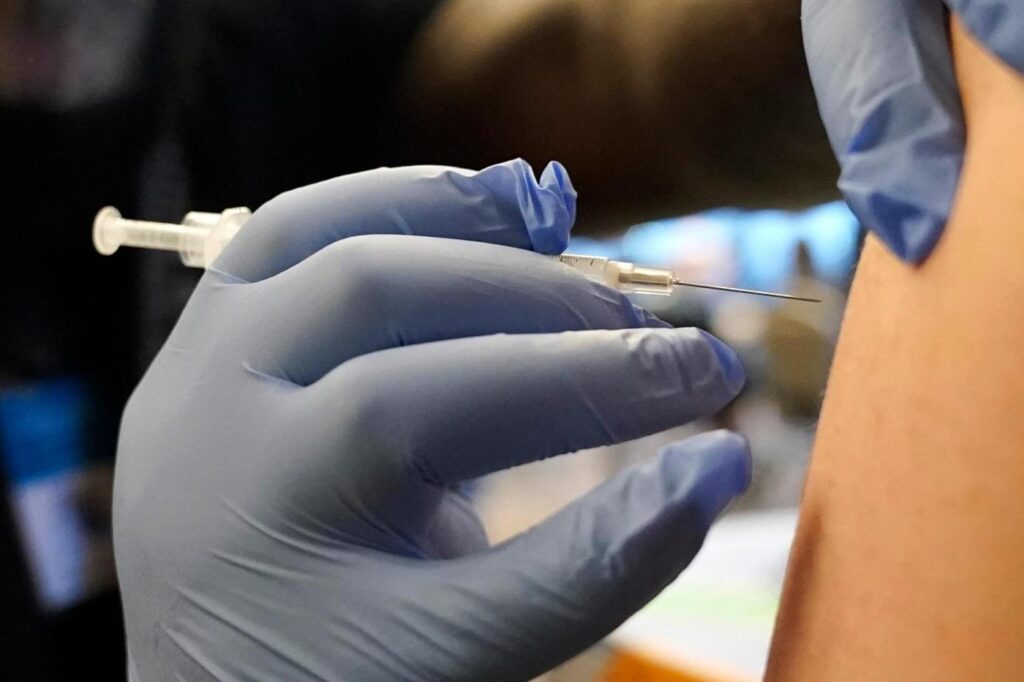
Don’t look at California’s COVID-19 case and hospitalization rates by vaccine status if you’ve had a booster or are considering one: Posted figures suggest you could be just as likely — or even more so — to get infected if you’re boosted than if you only had the initial shots.
So is there a problem with the boosters? Absolutely not, one of the state’s top public health officials insists.
“The bottom line message is that absolutely boosters are incredibly important,” said California State Epidemiologist Dr. Erica Pan. “Boosters definitely protect you, especially from severe infections and death.”
State health officials and other health analysts attribute the seemingly odd trend to limitations of the data that don’t distinguish things like how long ago a person had a booster and whether the extra shots over time have lost their effectiveness against the latest fast-spreading variants of the virus.
And what is crystal clear is the latest numbers continue to show that people who are not vaccinated at all have higher infection, hospitalization and death rates than either the vaccinated or boosted, state health officials noted.
Data posted on California’s online COVID-19 tracking dashboard demonstrate the effectiveness of vaccination and booster shots in reducing risk of the disease. In January, at the peak of last winter’s surge of cases driven by the highly contagious omicron variant, the case rate per 100,000 people was 647.5 for the unvaccinated, 227.4 for the vaccinated and 119.1 for the boosted.
At the same time, hospitalization rates per million were 168.5 for the unvaccinated, 34.1 for the vaccinated and 16 for the boosted. Death rates per million were 21.7 for the unvaccinated, 3 for the vaccinated and 1.1 for the boosted.
But that began to change in late February, when the numbers for the boosted began overtaking those who had just the initial shots.
Although rates across all categories have improved since January, the most recent data on May 15 showed a case rate of 105.9 for the unvaccinated, 11.3 for the vaccinated and 22.5 for the boosted. The hospitalization rate was 16 for the unvaccinated, 1.5 for the vaccinated and 2.2 for the boosted. Death rates as of May 8 were 1 for the unvaccinated and 0.1 for both the vaccinated and boosted.
Pan said a key limitation in the data is that they don’t distinguish when someone had the extra shot. They show up the same in the data whether it was back in September or just last month.
That’s a problem because protection against the virus from prior infection, vaccination or boosters wanes over time as virus-fighting antibodies in the body subside and the virus mutates to evade immunity.
Another limitation, Pan said, is that most of the people who have had boosters tend to be more at risk to begin with, older and in poorer health. That was why they were prioritized for boosters initially. But it also means they are more susceptible to infection, serious illness and death.
What’s more, hospitalization data do not distinguish between people admitted because of severe COVID-19 symptoms and those who came in with something else and were found also to have COVID-19 by routine screening tests when they were admitted.
So a boosted patient with a mild breakthrough infection who went to the hospital for a broken ankle shows up in the data the same as a boosted person who’s been intubated with oxygen for severe COVID-19.
A Rockefeller Foundation blog post in April highlighted numerous data issues that can produce misleading pictures of breakthrough infections. Among other challenges, it noted that getting accurate information on the constantly changing size of the vaccinated and boosted populations is critical to providing meaningful rates.
Related Articles
Coronavirus: Orange County reported 3,091 new cases and 11 more deaths, June 3
South Coast Repertory cancels remaining ‘Our Town’ shows because of COVID-19
Monkeypox: What you need to know after likely first Southern California case
Coronavirus: Orange County is 71.9% fully vaccinated, June 6
LA County reports first apparent monkeypox case
The authors — data scientists Kara Schechtman, Dr. Dave Luo, Jonathan Gilmour and Kaitlyn Johnson, public health advisor Dr. Lindsey Shultz, public health researcher Rebecca Glassman, Dr. Jacqueline Houtman and Jessica Malaty Rivera of the Pandemic Tracking Collective, and Pandemic Prevention Institute Director Leo Wolansky — said existing data make it increasingly difficult to assess breakthrough risks.
“As new variants emerge in a population with an increasingly complex vaccination landscape, we hope that states and jurisdictions will become more transparent about their methodologies and limitations,” the post said. “A lack of consistency in states’ reporting is one of the reasons our team decided to stop collecting breakthrough data.”
California health officials said recent studies by the Centers for Disease Control and Prevention on actual vaccine and booster effectiveness continue to demonstrate their value. Among them was a study on vaccine effectiveness against hospitalization from the virus and another on their protection against severe illness requiring ventilation.
“The really important message,” Pan said, “is that when you look at the unvaccinated vs. those who had two doses or boosters, there’s still that big difference, that vaccination overall protects you.”
